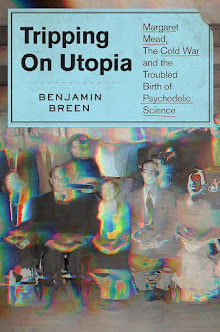- Pliny the Elder on the report of an embassy from Sri Lanka on the people who live in "Seres" (northwestern China).
The second installment of an occasional series of posts on my favorite vanished civilizations concerns the Tocharians, a forgotten culture that inhabited what is now far western China from pre-Classical times until the time of Muhammad. Although they were in many ways the progenitors of the Silk Road, the Tocharians remain a most mysterious and poorly understood people. Intriguingly, their language appears to have been a branch of the Indo-European linguistic family that strayed far to the east. Their home, the Tarim Basim, is centered around the forbidding Taklamakan Desert (the name of which can be loosely translated as "place of no return") and was probably one of the last regions of Asia to be inhabited by human beings.
The Taklamakan Desert.
NASA satellite image of the Tarim Basin, with the Taklamakan at center. Tocharian settlements generally ranged along the green northern rim.
The hardy souls who settled in this desolate landscape were known variously by their neighbors as the Yuezhi or the Kushans, and appear to have spoken various Tocharian dialects. Although some subsistence agriculture is possible at the margins of the Taklamakan, where rivers flow down from the foothills of the Northern Himalayas before evaporating into the desert, the rather large towns that the Tocharians appear to have inhabited where only possible due to the existence of long-distance trade routes. In short, the Tocharians appear to have been a mercantile people, serving as middle-men between the more advanced civilizations of early imperial China, South Asia, and the Middle East.
6th century AD wooden plates bearing examples of the Tocharian script.
Most of what we know about the Tocharians comes from the accounts of their Turkic and Chinese neighbors to the immediate east and west, but some intriguing archeological finds have complicated the picture. The most fascinating of all is the Tarim mummies. As the picture below shows, these mummies, which appear to date from around 1800 BC at the oldest to 200 AD, are almost uncannily well preserved.
Recent DNA testing on these mummies shows that they bear haplotypes that are typical of West Eurasian peoples, as well as inhabitants of the Indus Valley and Central Asia. This would appear to accord well with what we know of the latter-day Tocharians of the 6th century AD period and beyond, who are depicted in surviving visual sources as looking almost Celtic, with reddish hair and light eyes. Intriguingly, these mummies were wrapped in cloaks made of cashmere and plaid twill!
Painting of Buddhist monks from the Eastern Tarim basin, Bezelek, c. 8th century AD, with Tocharian at left.
Further investigation by historical geneticists and archeologists is sure to yield even more fascinating finds. Further reading: the Indiana Jones-era Norwegian explorer Sven Hedin wrote a great travelogue called My Life as an Explorer that deals extensively with his unintential rediscovery of an ancient Silk Road city in the Taklamakan Desert (he fell through an ancient roof covered with sand). There´s also a book exclusively on The Tarim Mummies
that deals extensively with his unintential rediscovery of an ancient Silk Road city in the Taklamakan Desert (he fell through an ancient roof covered with sand). There´s also a book exclusively on The Tarim Mummies that promises to have much more detail and images than I was able to present here.
that promises to have much more detail and images than I was able to present here.
More on the current controversy over the archeological rediscovery of the Tarim mummies -- and what it means politically in contemporary China -- can be found in this excellent New York Times article from 2008. The political use made of ancient human remains in this instance reminds me of my friend Chris Heaney´s wonderful book Cradle of Gold, which details the controversy surrounding the 1920s adventurer Hiram Bingham´s seizure of Incan bones and other funerary remnants in Machu Picchu (Peru is currently in the midst of suing Yale University to have this archeological heritage returned). Mummies are political!
More on the current controversy over the archeological rediscovery of the Tarim mummies -- and what it means politically in contemporary China -- can be found in this excellent New York Times article from 2008. The political use made of ancient human remains in this instance reminds me of my friend Chris Heaney´s wonderful book Cradle of Gold, which details the controversy surrounding the 1920s adventurer Hiram Bingham´s seizure of Incan bones and other funerary remnants in Machu Picchu (Peru is currently in the midst of suing Yale University to have this archeological heritage returned). Mummies are political!
Signing off from São Paulo!
6th century AD wall fresco from Qizil in the western Tarim basin depicting ´Tocharian donors.





1 comment:
Beautiful. Thanks
Have a nice day
Miguel, from Córdoba, Spain
Post a Comment